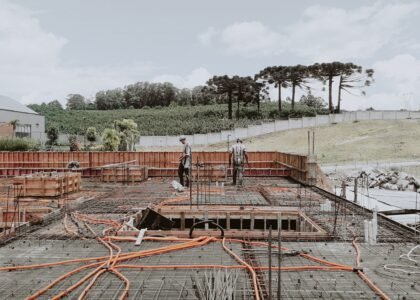Introduction
In a rapidly changing world, the demand for sustainable development has become paramount. Civil engineering stands at the forefront of this movement, wielding significant influence in shaping a more sustainable future.
In an era where the global call for sustainability echoes louder than ever, the role of civil engineering stands as a cornerstone in forging a harmonious relationship between development and the environment. Beyond erecting structures that merely touch the skyline, civil engineering is the art of sculpting a future where progress intertwines seamlessly with nature’s delicate balance.
Civil engineering embodies a vision that extends far beyond blueprints and construction sites. It champions a philosophy that embraces eco-consciousness, ethical responsibility, and the art of innovation. At its core, this discipline embodies the pursuit of balance — a harmony between advancement and preservation, progress and conservation.
As the world grapples with the pressing challenges of climate change, resource scarcity, and population growth, civil engineering emerges not just as a solution provider but as a catalyst for transformation. It’s a symphony of expertise, science, and creativity that orchestrates the development of sustainable solutions to intricate global challenges.
At the heart of civil engineering lies a commitment to engineering marvels that aren’t just structurally resilient but also environmentally empathetic. It’s a discipline that seeks to build a world where progress isn’t achieved at the cost of nature but is harmoniously woven into the fabric of ecological balance.
Sustainable Infrastructure
Sustainable structures are the embodiment of a conscientious approach to construction. They embrace renewable materials, energy-efficient designs, and innovative technologies. Beyond their functionality, these edifices stand as beacons of eco-consciousness, utilizing passive designs, green roofs, and efficient insulation to minimize environmental impact and maximize long-term sustainability.
They transcend traditional building norms, integrating renewable energy sources like solar panels and wind turbines seamlessly into their framework. These structures are meticulously planned to optimize natural light, harness rainwater, and employ advanced recycling systems.
Sustainable buildings aren’t just architectural feats; they’re living examples of responsible engineering, fostering a greener tomorrow while reducing carbon footprints and promoting a healthier environment for generations to come.
Urban Planning and Environmental Harmony
The discipline plays a vital role in urban planning, aiming to create cities that are more livable, resilient, and environmentally conscious. Civil engineers work on sustainable transportation systems, efficient waste management, and green spaces, ensuring cities function harmoniously with nature.
Civil engineers spearhead urban planning initiatives that redefine cities as thriving hubs of sustainability. They reimagine urban landscapes with efficient public transportation, pedestrian-friendly zones, and interconnected green spaces that rejuvenate the environment. Collaborating closely with communities, they revitalize urban cores while preserving ecological integrity, creating cities that are not just resilient but also offer a higher quality of life.
Water Resource Management
Efficient water management is a key aspect of sustainable development. Civil engineers design systems that conserve water, treat wastewater, and promote responsible water usage, safeguarding this precious resource for future generations.These engineers craft sophisticated water management systems, employing cutting-edge technologies to recycle and purify wastewater.
By implementing rainwater harvesting techniques and utilizing advanced irrigation systems, they optimize water usage in agricultural, industrial, and domestic settings. This meticulous approach ensures a sustainable water supply, mitigating scarcity and preserving this invaluable resource for a flourishing future.
Social Engagement and Sustainable Solutions
Beyond technical expertise, civil engineers engage with communities to ensure that development projects address societal needs and concerns. Their collaborative approach ensures that sustainable development aligns with social equity, benefiting communities while preserving the environment.
This collaborative ethos extends beyond infrastructure, fostering a partnership between engineers and communities. Civil engineers actively involve local stakeholders, valuing their insights and addressing specific needs within development projects. By prioritizing social equity, these professionals design solutions that enhance livelihoods, promote inclusivity, and improve access to essential services while upholding environmental stewardship. Through this approach, sustainable development becomes a shared journey toward a brighter, more equitable future.
Conclusion
Civil engineering’s role in sustainable development is multidimensional, encompassing eco-friendly design, resource conservation, and community-focused solutions. As stewards of the built environment, civil engineers play a pivotal role in shaping a sustainable future.
n essence, civil engineers serve as custodians of a balanced ecosystem, where progress harmonizes with environmental preservation. Their commitment to sustainable practices extends beyond individual projects; it’s a commitment to a collective legacy of responsible development.
As the stewards of the built environment, civil engineers pioneer innovative solutions, transforming challenges into opportunities. Their work transcends the present, laying the foundation for future generations to thrive in a world where progress walks hand in hand with environmental conscientiousness.
At Anedian Group Nigeria Company Limited, this commitment is ingrained in our ethos. We stand alongside these pioneers, dedicated to shaping a sustainable future. Through innovation, expertise, and a steadfast commitment to sustainability, we continue to engineer a world where progress and preservation coexist harmoniously. Join us on this journey toward a more sustainable tomorrow.




